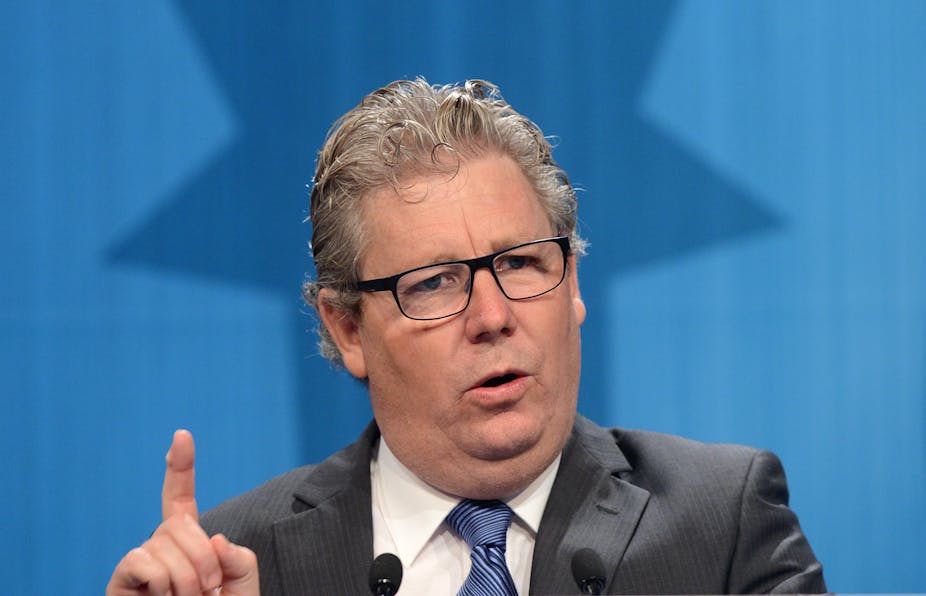The recent Four Corners documentary on poverty in the United States is a salutary reminder of why the Australian Council of Trade Unions (ACTU) needs to hold the line on minimum wages in relation to average weekly earnings.
The documentary highlighted the hardships for working people to manage the most basic of accommodation and living costs with earnings of $7 to $8 per hour. According to the Washington-based Economic Policy Institute, the federal minimum wage in the USA had slipped to 37% of average hourly earnings by 2011 from around 50% in the late 1960s.
While the minimum wage in Australia is set at $606.40 per week (or $15.96 per hour). around twice that of the American minimums, it too is also slipping in relation to average earnings, which stand currently at $1393 per week.
The ACTU reports that the minimum wage has fallen from 50% of average weekly full-time earnings in 2000 to 43.4% in 2012. It wants Fair Work Australia to increase the national minimum wage to $636.40 a week or $16.75 per hour – an increase of $30 per week, or 79 cents per hour. The increase would affect 745,000 workers. The ACTU argues that Australia on current trends is on track of creating an “American-style class of working poor in Australia”.
Business groups are contesting the ACTU proposal, with the ACCI suggesting a $5.80 per week pay rise, claiming increased imposts on business and barriers to employment creation. However, there are many reasons why the ACTU’s claim of $30 per week should be supported.
Growing income inequality
The disparity between the minimum wage and average earnings is a facet of growing income inequality, which the federal government’s Social Inclusion Board shows has increased over the last 15 years. It also notes that income inequality now stands at the OECD average. However, the longer term trend should be a matter of concern for policymakers. Countries with higher levels of inequality do worse on a range of social and economic indicators than more equal societies.
Insecure and part time work
Australia has a large proportion of workers in casual and insecure work, compared to most OECD countries. Around 20% of the workforce is employed in casual jobs, which pay an hourly rate. There is also a very high level of level of underemployment in Australia, currently 7.3% of the workforce. A decent hourly rate helps to shore up the living standards of casual and underemployed workers.
Women
Women are particularly affected by employment insecurity and underemployment. About 1.1 million women are in casual jobs constituting 23% of the female workforce in contrast to 16% of the male workforce employed casually. Underemployment or not enough hours of work, currently affects 9.5% of the female workforce compared to 5.5% of the male workforce. The Social Inclusion Board further notes that women have higher rates of persistent low economic resources. There is an important gender equity component to the minimum pay claims.
Making work pay
As The Economist’s Worldwide Cost of Living Survey frequently reminds us, Australia is an expensive place to live — and housing affordability is particularly low. These cost of living pressures need to be taken into account in setting minimum wages, as the ACTU submission to Fair Work Australia will no doubt argue. Decent wage rates, especially at the lower end of the earnings spectrum, are important in alleviating poverty and ensuring that those leaving social welfare payments are better off in work.
A working population reduces welfare expenditure and enhances productivity. But we should also consider that decent wages have multiplier effects through the economy in supporting spending, so business groups should not complain too much.
Some advice for the USA – and Australia
In his State of the Union address in February, President Barack Obama prioritised the growth of the middle class (and middle-class jobs) as core aims for the forthcoming term of office. He didn’t explicitly define “middle-class jobs”, but we might conclude that they are jobs that pay decent wages and are fairly secure. In this light, Obama could also have given some thought to the plight of those of those at the bottom of the earnings scale trying to get by on minimum wages of $7-$8 per hour.
We might conclude that Obama’s middle-class jobs are those which provide earnings sufficient for a standard of living consistent with social norms and expectations – buying a house or comfortably paying rent, raising a family, social participation. That is why the relationship between minimum wages and average earnings is so important, and why the present disparity should be reduced in both Australia and the USA.

